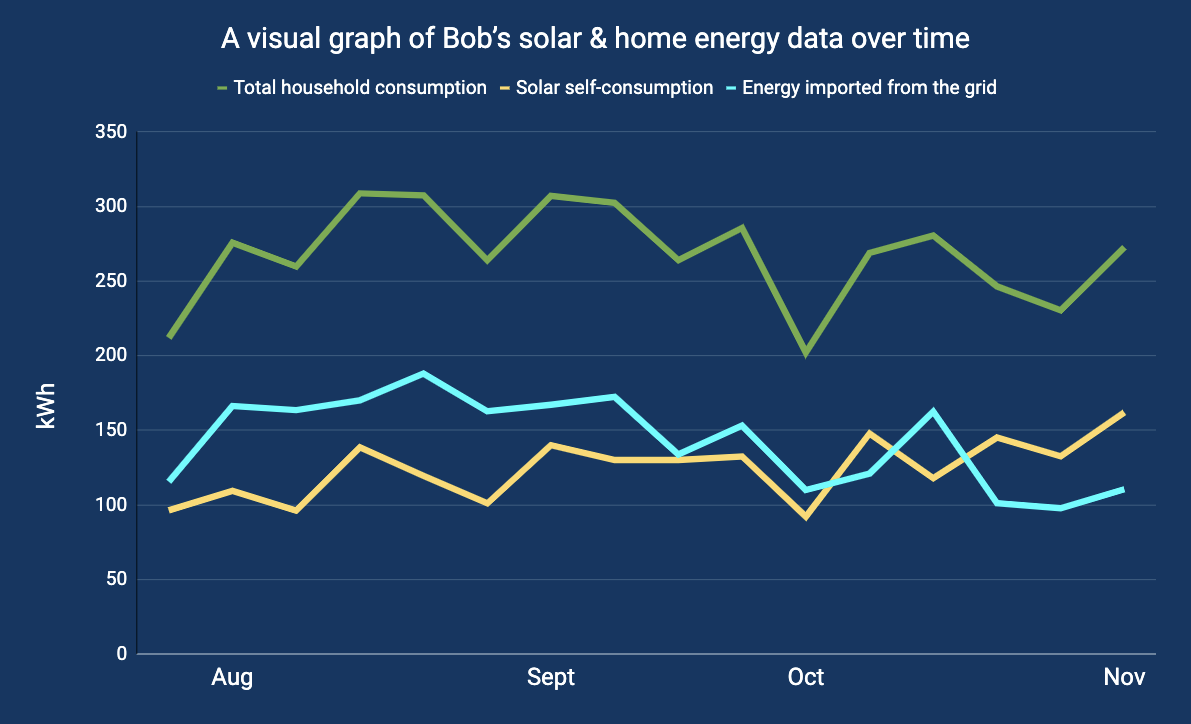Sydney homeowner switches to Powersensor after electricity meter upgrade renders his previous energy monitor useless
Customer Profile
Bob | Surry Hills, NSW
Solar inverter: 10kWh
Using solar since 2020
Upgrading their home energy setup
Bob has always had an interest in solar energy and wanted to be less grid reliant, lowering his home energy bills.
Shortly after Bob and his wife purchased an electric car (Tesla) in September 2020, they decided to improve their home energy efficiency by installing a solar system for their Surry Hills home.
After installing a 10kW rooftop solar system, Bob purchased a Powersensor energy monitor to help him maximise his solar self-consumption. Charging his electric car from his own solar was important to Bob, so he needed a way to monitor his solar output.
Before discovering Powersensor
Bob originally chose the cheapest energy monitor he could find, but he was unaware it had a major limitation. The energy monitor that Bob chose was one that worked by detecting light pulses, emitted by regular household electricity meters on their LED pulse output.
Soon Bob discovered that energy monitors that rely solely on detecting the LED pulse are ineffective on homes with solar, since any excess solar is invisible to the energy monitor. It simply had no way to detect how much of his solar power was feeding back into the grid.
These energy monitors are known as optical (or light pulse) monitors - and they can only provide the component of household consumption for energy that is imported from the grid. These monitors fall significantly short for homes with solar, as they are unable to provide critical data about your solar system. They have no way of monitoring:
How much solar is feeding back into the grid
How much solar is self consumed
Their total solar panel output (gross solar generation)
To top it off, Bob’s energy company made a change to the configuration of his electricity meter. It emitted pulses when energy was being imported and exported, and the monitor had no way of differentiating between the two. This rendered the monitor’s limited capability (grid import only) of no value to Bob’s home.
"Powersensor is better for our household as it is simple for a non-tech person to see when there is excess solar at home and exactly how much."
After discovering Powersensor
Bob decided to switch to Powersensor to accurately monitor his grid consumption and solar output. Within less than three months, Bob had maximised his solar self-consumption at home by 14.58% and reduced his feed-in to the grid by 25.56% - making the most of his rooftop solar.
From the very beginning, Bob was impressed by Powersensor’s easy DIY installation and its user-friendly app. Though Bob’s background is in electricity, he was confident that his family would also be able to use Powersensor without issue.
A visual comparison between Bob’s solar self-consumption vs energy imported from the grid over the span of three months.
“Powersensor is better for our household as it is simple for a non-tech person to see when there is excess solar and exactly how much.”
To make the most of his rooftop unit, Bob started using excess solar to charge his electric car. He was able to use Powersensor to tell in real-time when and how much solar he was exporting.
Instead of feeding excess energy back into the grid, he would turn on his Tesla charger, which can be done through an app on his phone. Depending on how much solar he was exporting, Bob would use the app to switch from low power to high power charging. Thanks to Powersensor, Bob says he never pays to charge his electric car with energy from the grid.
Average cost of charging electric cars in Australia
Typical electric car batteries range from 24-100kWh capacities. An electric car with a 60kWh battery can travel more than 300 km on a full charge, and the fact that NSW motorists travel the most kilometres per year on average combined with rapidly rising energy prices, Bob would be looking at a significant increase in his electricity bill if he were to charge his electric car from the grid.
Average cost of fully charging an electric car with a 60kWh battery by state: (State / Average Electricity Rate / Charge Cost)
ACT - 30.3270c/kWh - $18.20
NSW - 31.2363c/kWh - $18.74
QLD - 25.45c/kWh - $15.27
SA - 40.1830c/kWh - $24.11
VIC - 24.4440c/kWh - $14.67
WA - 25.02c/kWh - $15.01
Source: Susannah Guthrie, Drive, August 2022
The result? Bob spends no money charging his electric car. By using Powersensor, both Bob and his wife are able to understand when to switch on their electric car charger, and with the granular, real-time export and consumption data provided they can even tell when they are producing enough solar to switch to quicker, high-power charging without drawing anything from the grid.
Maintaining the charge in his electric car helps the battery last longer, while ensuring that Bob and his family are ready to hit the road anytime, at no extra cost.
Bob’s Powersensor Solution
Advanced Solar Monitoring Solution





